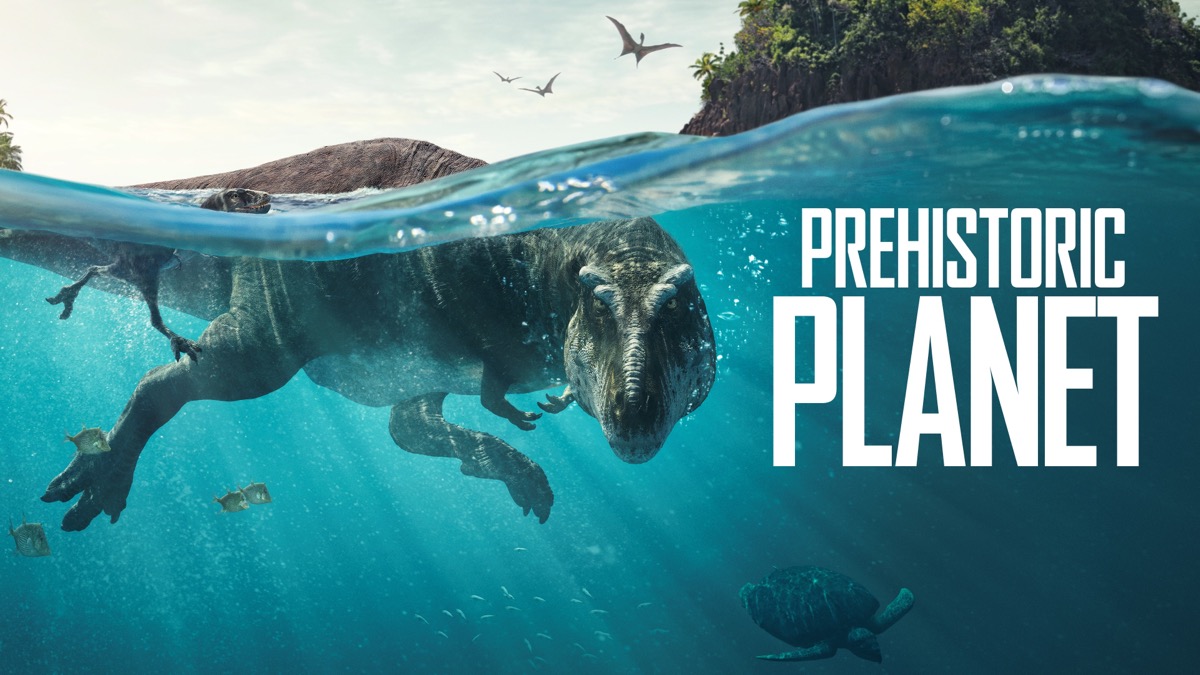‘Prehistoric Planet’ Review: Breathtaking Docuseries Makes You Forget Dinosaurs Are Extinct

Few animals in history have ever tapped into our collective imagination in quite the same manner that dinosaurs have. Their massive scale and early extinction has given them almost the same status of mythical or magical creatures in our mind. This is the general premise with which famed biologist, natural historian, and broadcaster Sir David Attenborough opens the docuseries Prehistoric Planet. This brand new series, distributed by Apple TV+, is an exciting five-day event. Between May 23, 2022 and May 27, 2022, the five parts of Prehistoric Planet will be released on the streaming platform, one day at a time.
Prehistoric Planet combines the talents of Jon Favreau (the visionary behind Iron Man, The Jungle Book, and The Lion King), Mike Gunton (the head of BBC’s Natural History Unit), and the creators of famed nature series Planet Earth. Rounding out the team is the highly regarded Attenborough, whose enthusiastic and vivid narration is the final hook of the series. Prehistoric Planet strives to answer the most pressing questions related to the existence of dinosaurs: What did they look like? How did they live?
Answers to these questions remained elusive for years, but with research and top-notch computer imagining, Prehistorical Planet gives us the best modern visual answer.
The future of CGI is here with Prehistoric Planet
To start with, Prehistoric Planet’s CGI rendering of dinosaurs is not perfect. There are times when the realistic nature falters briefly and we can see through the illusion. However, most often, the CGI is nothing short of incredible. The series utilizes the same photorealistic quality that is found in such films as The Lion King. It is, essentially, the attempt of an artist to depict real people or objects with the exactness of a photograph.
The depiction is so realistic that it’s hard to detect anything is amiss. Watching a Tyrannosaurs Rex swim across the ocean with his young seems as natural as watching a dolphin swim in the ocean. The herd of Ornithomimus making their nests on an island seems as natural as watching a herd of ostriches. You truly feel like you are somehow watching a live nature documentary following dinosaurs in the ecosystems that existed 66 million years ago.
The crown jewel of this docuseries, though, is the detail. From the glittering water droplets condensing on the skin of a Hadrosaur to the wet nictitating membrane sliding over the eye of T-Rex, to the individual blue feathers of a Corythoraptor riffling in the wind, the detail is exquisite. The amount of detail seen in the series makes you think that, surely, the creators had a plethora of live dinosaurs to observe—that there’s no other way they could have known what these animals sounded like when they breathed, or how their weight shifted when they walked, or how they nuzzled each other when they mated. The power of scientific research and futuristic CGI is truly mind-boggling.
A different side of dinosaurs
Details and stunning visuals make up only a portion of Prehistoric Planet. The rest of the series is filled with the true story of dinosaurs. It is common for dinosaurs to be portrayed in the media in a stereotypical way. The herbivores are the innocent and weak animals that are preyed upon. Meanwhile, the carnivores are bloodthirsty beasts devouring all in their path. Prehistoric Planet’s depiction is not always as exciting as typical depictions, and there are times when the detail gets exhaustive. However, if you care to truly listen to the story, you will be captivated.
Prehistoric Planet depicts how dinosaurs may have actually lived, and it gives them almost humanistic properties. You hold your breath as the T-Rex and his young rush to shore while being trailed by a Mosasarus. You giggle as an Ornithomimus sneakily steals his neighbors’ sticks for his own nest, or you may even blink back tears as an Olorotitan is forced to leave her wailing young behind. These dinosaurs aren’t monsters, or magical creatures, or evil predators. They are simply doing their best to survive in a harsh world. They search for food and water, build safe nesting places for their eggs, seek mates, guide their young, and fight against threats.
Prehistoric Planet reiterates that, regardless of appearance or traits, all species on Earth are simply trying to survive. Humans, who have a reputation for not taking care of their environment or caring enough when a species goes extinct, might be struck by this series. It presents the idea that we are not so far removed from any species, not even those that lived 66 million years ago. There’s a potential of viewers walking away from this series caring just a little bit more about the Earth and all of its inhabitants. It’s this conscious and respectful take on prehistoric species that makes this docuseries truly worth the watch.
(featured image: Apple Inc)
Have a tip we should know? tips@themarysue.com